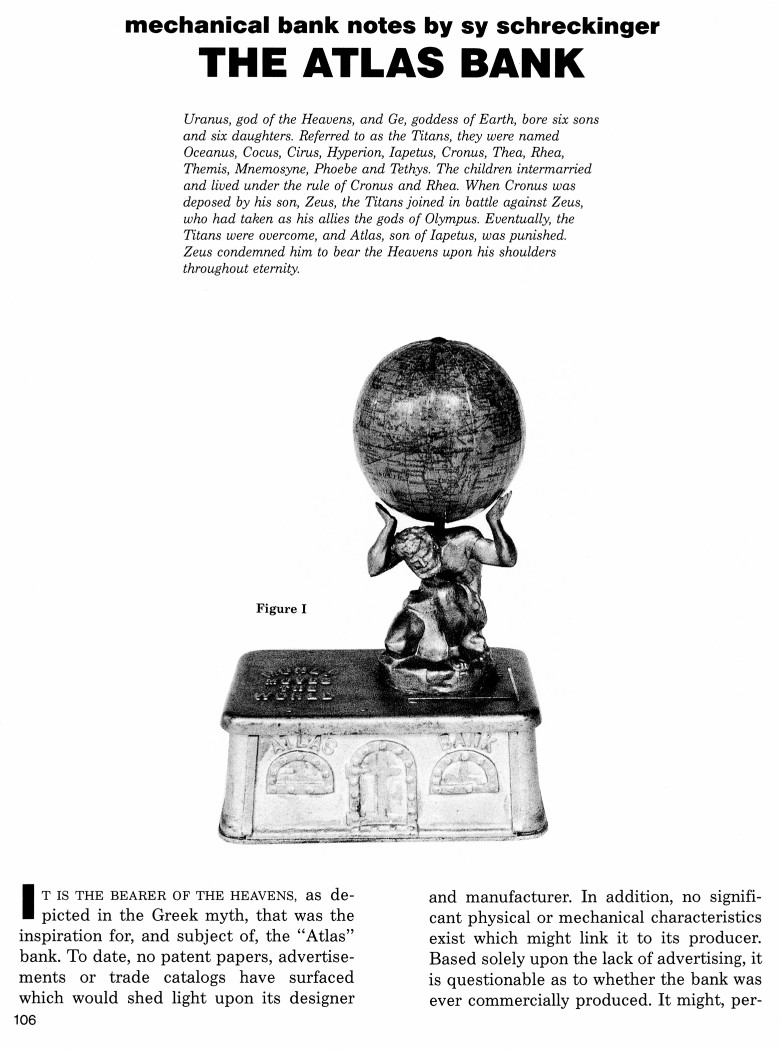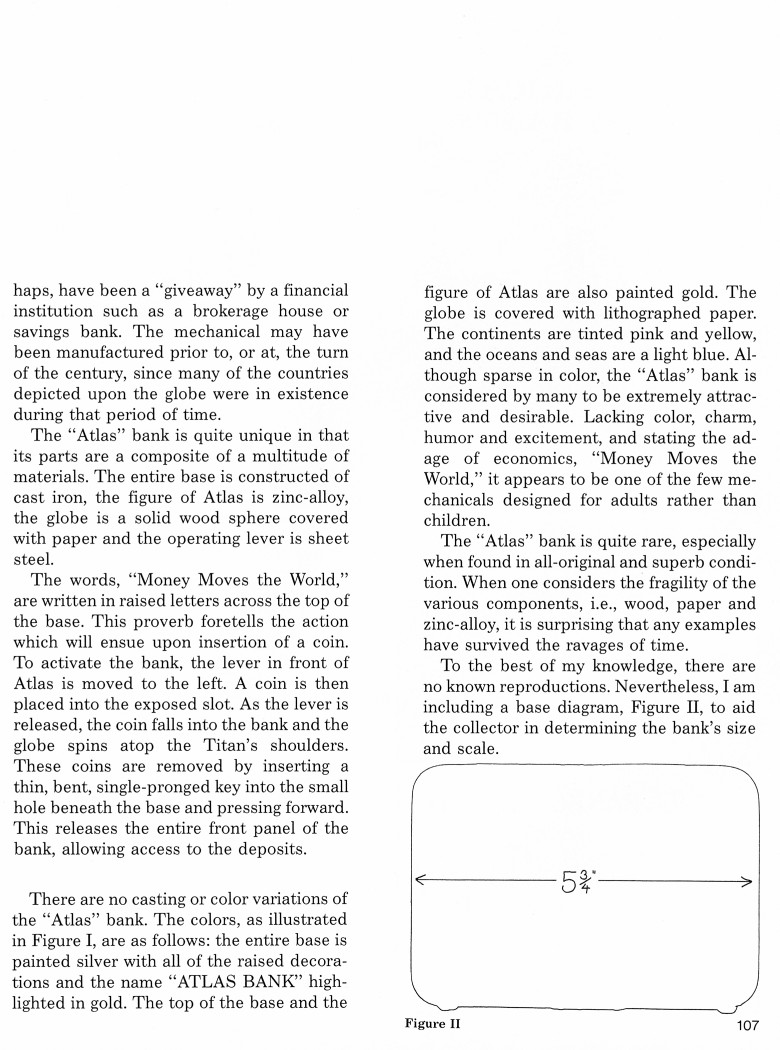|
The Atlas Bank
by Sy Schreckinger – ANTIQUE TOY WORLD Magazine – March, 1990
Uranus,
god of the Heavens, and Ge, goddess of Earth, bore six sons and six
daughters. Referred to as the Titans, they were named Oceanus, Cocus,
Cirus, Hyperion, Iapetus, Cronus, Thea, Rhea, Themis, Mnemosyne, Phoebe
and Tethys. The children intermarried and lived under the rule of Cronus
and Rhea. When Cronus was deposed by his son, Zeus, the Titans joined in
battle against Zeus, who had taken as his allies the gods of Olympus.
Eventually, the Titans were overcome, and Atlas, son of Iapetus, was
punished. Zeus condemned him to bear the Heavens upon his shoulders
throughout eternity.
It is the bearer of the Heavens, as depicted in
the Greek myth, that was the inspiration for, and subject of, the "Atlas"
bank. To date, no patent papers, advertisements or trade catalogs have
surfaced which would shed light upon its designer and manufacturer. In
addition, no significant physical or mechanical characteristics exist
which might link it to its producer. Based solely upon the lack of
advertising, it is questionable as to whether the bank was ever
commercially produced. It might, perhaps, have been a "giveaway" by a
financial institution such as a brokerage house or savings bank. The
mechanical may have been manufactured prior to, or at, the turn of the
century, since many of the countries depicted upon the globe were in
existence during that period of time.
The "Atlas" bank is quite unique in that its parts are a composite of
a multitude of materials. The entire base is constructed of cast iron, the
figure of Atlas is zinc-alloy, the globe is a solid wood sphere covered
with paper and the operating lever is sheet steel.
The words, "Money Moves the World," are written in raised letters
across the top of the base. This proverb foretells the action which will
ensue upon insertion of a coin. To activate the bank, the lever in front
of Atlas is moved to the left. A coin is then placed into the exposed
slot. As the lever is released, the coin falls into the bank and the globe
spins atop the Titan's shoulders. These coins are removed by inserting a
thin, bent, single-pronged key into the small hole beneath the base and
pressing forward. This releases the entire front panel of the bank,
allowing access to the deposits.
There are no casting or color variations of the "Atlas" bank. The
colors, as illustrated in Figure I, are as follows: the entire base is
painted silver with all of the raised decorations and the name "ATLAS
BANK" highlighted in gold. The top of the base and the figure of Atlas
are also painted gold. The globe is covered with lithographed paper. The
continents are tinted pink and yellow, and the oceans and seas are a light
blue. Although sparse in color, the "Atlas" bank is considered by many to
be extremely attractive and desirable. Lacking color, charm, humor and
excitement, and stating the adage of economics, "Money Moves the World,"
it appears to be one of the few mechanicals designed for adults rather
than children.
The "Atlas" bank is quite rare, especially when found in all-original
and superb condition. When one considers the fragility of the various
components, i.e., wood, paper and zinc-alloy, it is surprising that any
examples have survived the ravages of time.
To the best of my knowledge, there are no known reproductions.
Nevertheless, I am including a base diagram, Figure II, to aid the
collector in determining the bank's size and scale.
|


